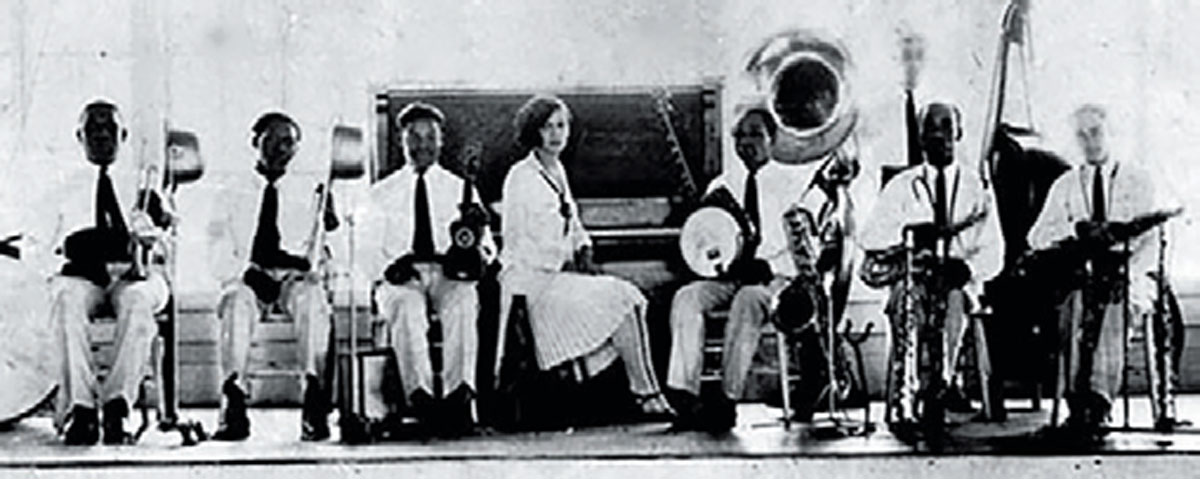Music in Every Direction
Bruce Boyd Raeburn, curator of the Hogan Jazz Archive at Tulane University, notes that despite modern assumptions, “the French Quarter was not ground zero for jazz until after Prohibition.” A recently dismantled Storyville and the removal of cabarets from the Tango Belt along Iberville Street dispersed vice.
Though jazz would have been performed at any number of New Orleans venues, both legal and not, perhaps the area’s most significant speakeasy was Jack Sheehan’s Suburban Gardens in cheaper-to-bribe-the-cops Jefferson Parish. Some of the biggest performers of the day, including Louis Armstrong, Armand Piron and Oscar “Papa” Celestin, performed at this restaurant front. Suburban Gardens was a “black and tan club,” according to Raeburn, and its patrons included socialites from New Orleans’s wealthiest families.
However, Raeburn points out that, despite top musical acts, the “number one money maker at Suburban Gardens, as with Storyville before it, was alcohol.” Musicians saw little of this profit, prompting them to often travel a wide circuit to make ends meet.




